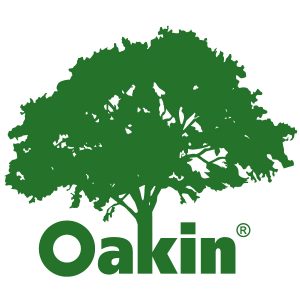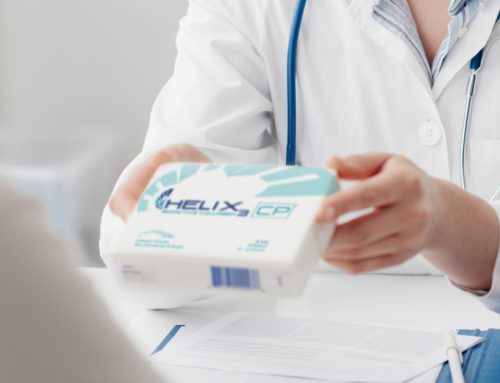A major problem when caring for wounds is the high risk of infection. It is very easy for bacteria to enter the body through broken or damaged skin and spread. Bacteria can colonize wounds within the first 48 hours of injury; leading to infection and prolonging the inflammatory phase of wound healing 8. Ideally, agents active against the micro-organisms causing infection, are used to reduce the risk of infection and decrease healing time. Mordorski et al.11 found that topical dressings routinely used to maintain a moist wound environment and enhance occlusion have not been shown to decrease the risk of infection in wounds and are often found to contain antibiotics that are known contact allergens (bacitracin and neomycin). McDonnell 9 found these antibiotics are associated with adverse side effects including hypersensitivity, immune suppression, and allergic reactions.
Increased resistance to antimicrobial agents over the past decades and other adverse effects of antibiotics on the host resulted in new research on antimicrobials of plant origin, including oak extract. The phytochemical constituents of a plant often determine its physiological action on the human body. The genus Quercus (Oak) is abundant in nature and oak bark is known to have a high concentration of tannins. Tannins are a complex group of carbon-based polyphenolic compounds; a diverse group of high molecular weight metabolites produced as bi-products of secondary metabolism in plants 6. Polyphenolic compounds are further divided into subgroups based on chemical structure such as tannins 14.
Tannins have long been thought to play a role in wound healing by reacting with microbial enzymes (bacterial & fungal) to inhibit their activity 8. Akiyama et al. 1 found that many microbial enzymes in raw cultures or purified forms are inhibited when mixed with tannins. Tannin toxicity on microbes is related to action on the membrane of the microorganism. Tannic acid may work like a siderophore, or iron carrier, to chelate iron from the medium and make iron unavailable to microorganisms 3. The high concentration of tannins in oak bark is shown to promote very strong astringent properties that act locally by precipitating proteins to the wound 14; decreasing cell membrane permeability that affects microorganisms, and by exerting anti-inflammatory and bactericidal properties 8. Tannins are also found to have antioxidant potency 4 which helps to heal cuts, abrasions, wounds, burns, and other skin conditions 14. In addition, tannins play a major role in wound healing by preventing oxidative damage from free radicals 3.
Studies to determine the effectiveness of oak extract-based topical dressings on resistant forms of bacteria have demonstrated good results. Tannins have the ability to stop infection while continuing to heal the wound internally 7. Tannins react with proteins that make them insoluble, creating a protective layer that acts as a barrier for further infection 7. Results of research by Sohretoglue et al. 13 indicate plant-based antimicrobials are effective while simultaneously mitigating many side effects often associated with synthetic antimicrobials. Chung et al. 3 reported tannic acid inhibited the growth of 15 bacteria tested; showing ester linkage between gallic acid and glucose to form tannic acid was important to the antimicrobial potential of these compounds. Chung stated, “microorganisms for S aureus were markedly decreased with tannic acid, and maybe a useful adjunct agent for the treatment of S aureus skin infections”.
Davis et al. 5 conducted two studies involving oak extract: “The Use of Topical Agents Containing Oak Extract in Wound Healing on Methicillin-resistant Staphylococcus Aureus,” and “Wound Healing in Porcine Wound Models”. Davis reported results of the second in-vivo study found “The oak bark formulation facilitated healing; and further, more wounds healed in the oak bark treatment group”. The author suggests the oak bark formulation can enhance the migration of epidermal cells to accelerate healing.
 Oakin®, the proprietary ingredient in AMERIGEL® Hydrogel Wound Dressing, contains tannins from oak bark extract; including quercitannic acid, catechin, ellagitannin and proanthocyanidin that readily absorb into damaged skin. These highly astringent compounds act locally by precipitating proteins to the wound, decreasing cell membrane permeability, and exerting anti-inflammatory and bactericidal properties. Bio-Science Laboratories conducted a study using an In-Vitro Time-Kill Method to evaluate the antibacterial properties of the test product (Oakin) when challenged with suspensions of bacterial species. Test results revealed Oakin to be bactericidal against 51 gram+ and gram- microorganisms, including MRSA and VRE 2.
Oakin®, the proprietary ingredient in AMERIGEL® Hydrogel Wound Dressing, contains tannins from oak bark extract; including quercitannic acid, catechin, ellagitannin and proanthocyanidin that readily absorb into damaged skin. These highly astringent compounds act locally by precipitating proteins to the wound, decreasing cell membrane permeability, and exerting anti-inflammatory and bactericidal properties. Bio-Science Laboratories conducted a study using an In-Vitro Time-Kill Method to evaluate the antibacterial properties of the test product (Oakin) when challenged with suspensions of bacterial species. Test results revealed Oakin to be bactericidal against 51 gram+ and gram- microorganisms, including MRSA and VRE 2.
Moore J, et al. 10 evaluated the “Antimicrobial Efficacy of 3 Silver Dressings Verses a Novel Antimicrobial Hydrogel Impregnated Gauze Containing Oakin, an Oak Extract”. Results of the in-vitro study demonstrated “no substantial differences in the corrected zone of inhibition measurements between the silver wound dressings and the less expensive Oakin-impregnated gauze dressing”.
In Conclusion
Studies involving both in-vitro and in-vivo methods, in addition to case studies and multiple years of clinical experience, underscore the value of Oakin in AMERIGEL’s proprietary formulation for healing wounds. For 17 years beginning in 2003, AMERIGEL Hydrogel Wound Dressing has held the #1 Topical Wound Dressing ranking in Podiatry Management’s Annual Survey as podiatrist’s top choice for “Topical Wound Dressing Following Matrixectomy” and “Topical Wound-Ulcer Treatment”. AMERIGEL Hydrogel Wound Dressing, containing the proprietary ingredient Oakin, has been shown to provide an ideal microcosm for wound healing.

References
- Akiyama H, Kazuyasu F, Yamasaki O, Oono T, Iwatsuki K. Antibacterial action of several tannins against Staphylococcus aureus. Journal of Antimicrobial Chemotherapy, 2001;48(4): 487-491.
- BioScience Laboratories Inc. An Evaluation of One Test Product for its Antibacterial Properties When Challenged with Two Microorganism Strains Using an In-Vitro Time-Kill Method. 2005.
- Chung, KT, Lu Z, Chou MW. Mechanism of inhibition of tannic acid and related compounds on the growth of intestinal bacteria. Food and Chemical Toxicology. 1998; 36: 1053-60.
- Cowan MM. Plant products as antimicrobial agents. Clin. Microbiol. Rev. 12:564-582, 1999.
- Davis SC, Mertz PM. Determining the Effect of an Oak Bark Formulation on Methicillin-Resistant Staphylococcus Aureus and Wound Healing in Porcine Wound Models. Ostomy Wound Manage. 2008;54(10):16-8, 20, 22-5.
- Espirito-Santo, MM, Fernandes GW, Allain LR, Reis TRF. Tannins in Baccharis Dracunculifolia (Asteraceae): Effects of Seasonality, Water Availability and Plant Sex. Recevido em 29/12/1998. Aceito em 18/05/1999.
- Horvathova, Martina, et al. Effect of the French Oak Wood Extract Rovuvit on Markers of Oxidative Stress and Activity of Antioxidant Enzymes in Healthy Volunteers: A Pilot Study, Oxid Med Cell Longev., 2014;639868.
- Houghton PJ, Hylands PJ, Mensah, AY, Hensel A Deters AM. In vitro tests and ethnopharmacological investigations: wound healing as an example, Journal of Ethnopharmacology, 100: (1-2),100-107, 2005.
- McDonnell G, Russell AD. Antiseptics and disinfectants: activity, action, and resistance. Clin Microbiol Rev. 12: 147-179, 1999.
- Moore, J. Evaluating Antimicrobial Efficacy and Cost of 3 Dressings Containing Silver verses a Novel Antimicrobial Hydrogel Impregnated Gauze Dressing Containing Oakin, an Oak Extract. Advances in Skin & Wound Care: 2010; 23: (12) 544-551.
- Mordorski, Breanne BA, Friedman, Adam J MD, and Kircik, Leon H MD. Bensal HP for Second Intention Healing Following Mohs Micrographic Surgery or Shave Skin Biopsy: An Open-label Pilot Study. 2016;15(10).
- Serit M, Okubo T, Su RH, Hagiwara N, Kim M, Iwagawa T, Yamamoto T. Antibacterial Compounds from Oak, Quercus Acutata Thunb. Agric. Biol. Chem. 55:19-33, 1991.
- Sohretoglu D, Ekizoglu M, Kihc E, and Sakar, MK. Antibacterial and Antifungal Activities of Some Quercus Species Growing in Turkey. FABAD J Pharm. Sci., 2007:32, 127-130.hole Health Chicago. Oak Bark. Updated May 19, 2009Whole Health Chicago. Oak Bark 2009 (5.19).
AMERX Health Care Corp.
Founded in 1993 by John C. Anderson, AMERX Health Care Corporation is dedicated to providing superior wound and skin care products that deliver positive outcomes, increase patient compliance, and reduce treatment costs. Long-known for the top-rated AMERIGEL® line of topical wound and skin care products featuring Oakin® (oak extract), AMERX Health Care has expanded our offerings throughout the years. We now offer a comprehensive suite of wound care products including HELIX3® Bioactive Collagen, AMERX® Kits & Dressings, and the innovative EXTREMIT-EASE® Compression Garment.






